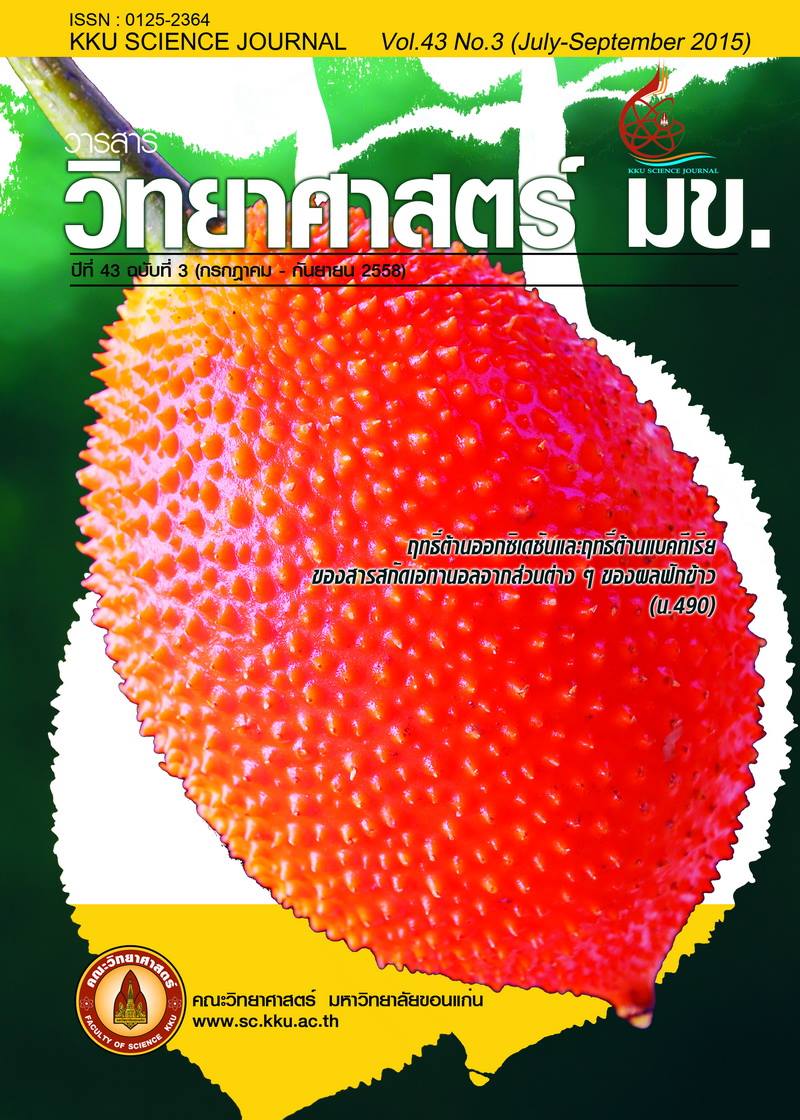Application of Remote Sensing and Geographic Information System Incorporated with Water Balance Model to Land Evaluation and Optimum Pond Capacity Analysis for Economic Crops Production in Nakhon Ratchasima Province
Main Article Content
Abstract
Remote sensing and geographic information system techniques incorporated with water balance model were applied to evaluate suitable area and determine the optimum on-farm pond capacity for economic crops (cassava, sugarcane, and maize) production in an area of interest (representative area) in Nakhon Ratchasima Province, Thailand. This study aimed for 1) formulation of the Landsat-based land use/land cover map; 2) suitable land evaluation; and 3) optimum on-farm pond capacity determination. It was found that 1) the 3 crops had occupied about 27.77% of the entire provincial area including cassava (17.70%), sugarcane (4.14%), and maize (5.93%); 2) sugarcane was found to be the most grown crop with highest percentage of land in highly suitable area (19.94%) and cassava is the second favorite crop with percentage in highly suitable area of 15.44%. Maize is the least grown crop with highly suitable land (7.49%); and 3) the representative area with a total area of 176,756.0 m2 was delineated and the optimum on-farm pond capacity was determined based on knowledge of full demand for the 3 crops. The optimum on-farm pond capacity was found to be 56094.6 m3 (with surface area of 10.62% of the representative area) which was sufficient for supplying full irrigation water to all 3 crops.
Article Details

This work is licensed under a Creative Commons Attribution-NonCommercial-NoDerivatives 4.0 International License.


